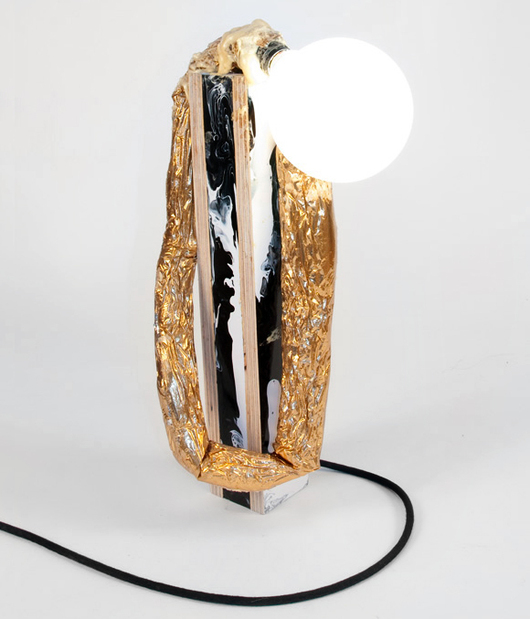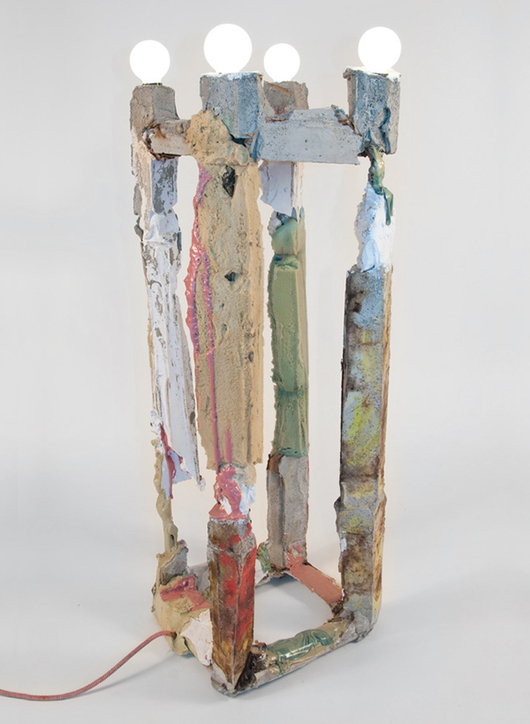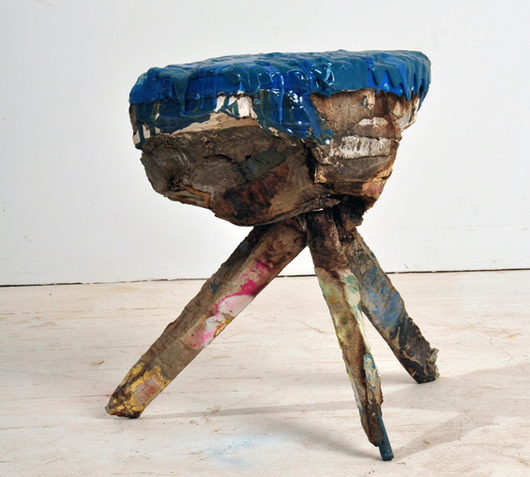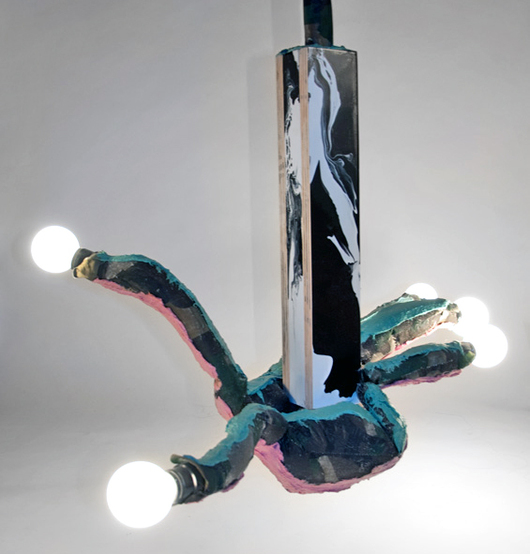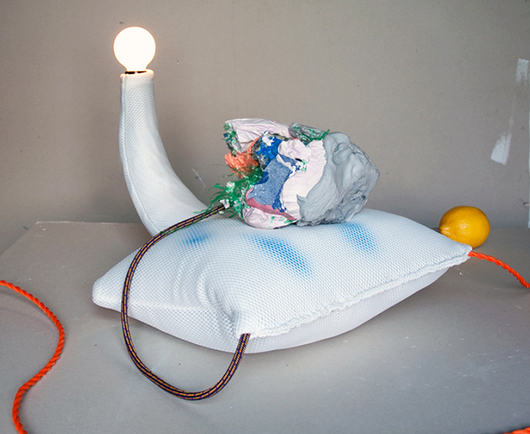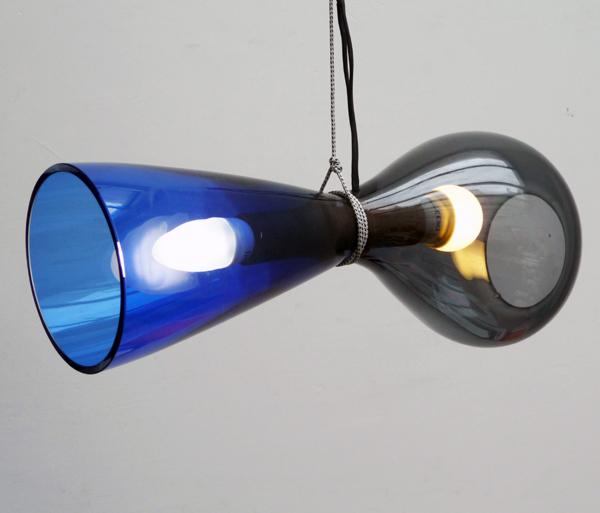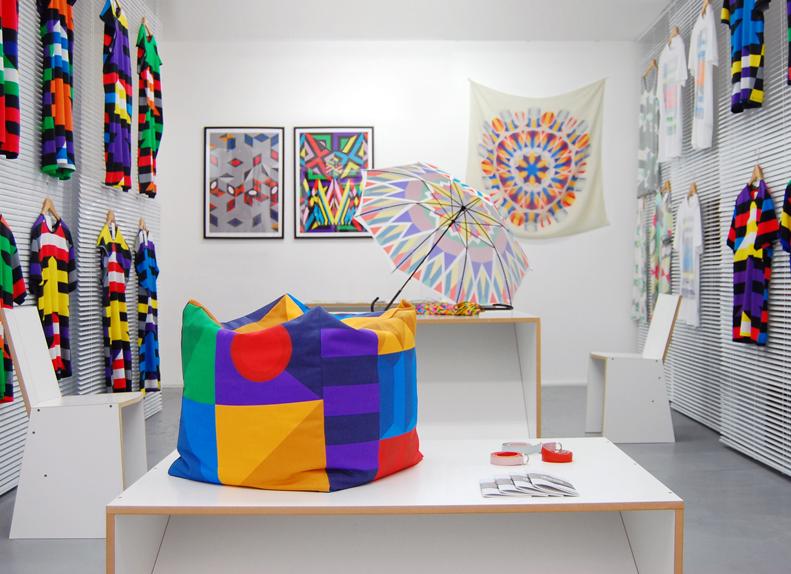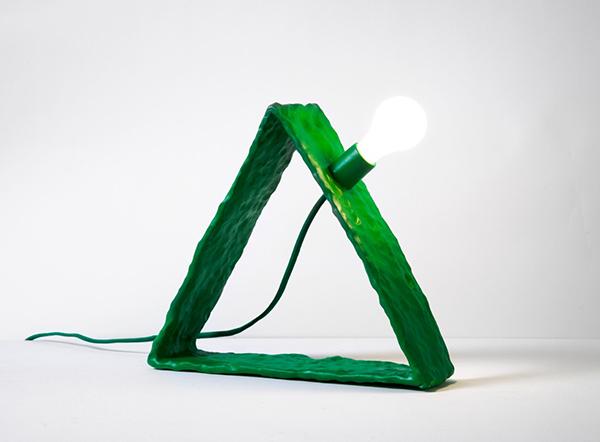
08.19.13
Up and Coming
David Kirshoff, Designer
If New York designer David Kirshoff‘s bright, blobby lamps and chairs have an element of the grotesque to them, to some degree it was fated: “I was raised around a shop that makes special effects for movies and TV, where my brother and I used to hide out and coat each other with fake blood,” says the 25-year-old Pratt grad. “I’ve been welding and machining, blowing things up, setting things on fire, and most importantly, making things with my hands since I was a little kid. That’s how I learned to be a craftsman.” Thanks to these formative experiences, Kirshoff developed a healthy knack for experimentation, and for not being afraid to work outside the normal boundaries of form and function. We discovered his wacky work through Zoe Fisher, whose upcoming Handjob Gallery Store project includes a special edition of his lamps. We’ll be helping Fisher launch her entire collection very soon, but in the meantime, you can get a sneak peek by way of our interview with Kirshoff below.
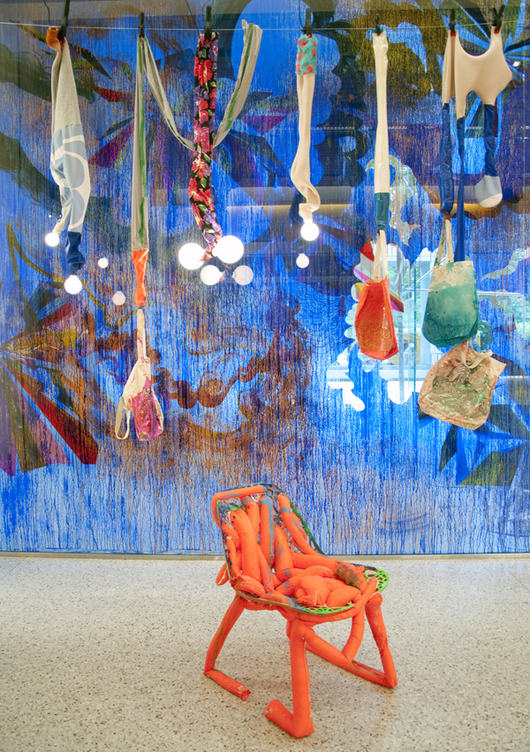
1. Describe your most recent project and how it was made.
Most recently, I was asked to do a small installation within the museum shop of the Museo del Barrio in Harlem. I hung a clothesline, and onto it I clipped droopy, draping hanging lights made of fabric and foam and punctuated with round glowing bulbs. I reworked an existing chair from the museum into glorious, orange, comfy graffiti detritus from the post-future, then reintroduced it into the space. I also made some floppy hanging sleeve-arms that grip tote bags made by the painter Alex Nuñez. The effect is a separate space within the shop where one can sit and feel something different than what they felt before.
I view my work as a language I’m cultivating as the shaman of a one-man-island. My goal is communication with the outside, albeit ambiguously and ethereally. I am interested in the emotional content of material and form, and provide for simple utilitarian functionalities as they lend to the relational aspects of my work. I use these things as tools of mediation through which to speak. I am working to gain the intuitiveness of an old boat-builder or metalsmith, measuring with my fingers, cutting by eye. Rather than luxurious woods and fine metals, however, I choose to sew Mylar space blankets and slap on house paint and fill things with spray insulation or cement. Usually I’m sewing bright fabrics or pouring goopy, soft urethane foam and plastic goo. I think about to what degree I can control these things — I usually create some type of framework and let the material speak for itself.
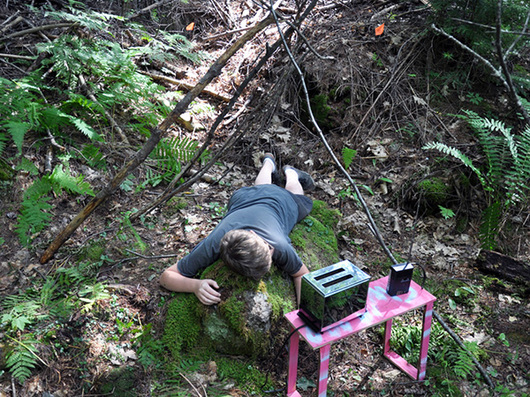
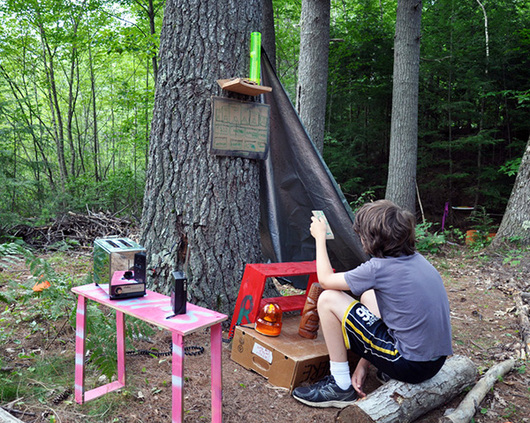
2. Describe your next project and how you’re currently making it.
I’m always looking to expand my practice to touch on different disciplines and crafts and explore the ways my aesthetic speaks and manifests. My physical work in furniture and design is informed by, and informs, other projects of mine, like a post-Nickelodeon video series called Wacky Delicious, an improvisational one-man cryptic prop-noise act. I want to make work that has another life beyond its physical presence: an ethereal, emotional, humorous, mystic content. My current projects include a chair series I’m doing with the Museo del Barrio – taking chairs from its café, reworking them, and reintroducing them ‘back into the wild’ — and two workshops I recently taught to kids at a camp in New Hampshire as part of my Wacky Delicious series. In Space Is the Place (pictured above), the kids worked with an area of the forest to build a neighborhood of semi-domestic spaces, with the intention of ‘pranking’ their parents with a postcard of the image — basically saying the camp has them sleeping outside in the woods. I’m also working on some designs for fountains and maybe a large-scale-dinner project.
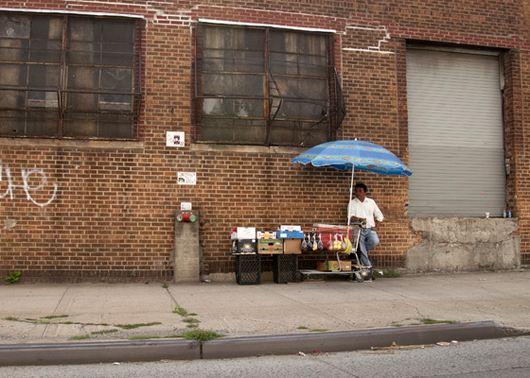
3. Tell us one thing that’s been inspiring you lately and why.
As I aim to create a sumptuous dystopian fantasy future in my work, I’m always inspired by imperfection and variation within the intentional environment. Improvised moments within the fabric of the city are often what I find most inspiring. The colored translucent visors and patterned aprons layered on top of jogging suits worn by the ladies at the dollar dumpling spot, a shopping cart filled with fresh fruit and outfitted with a spiral orange peeler, a brick with a long stick and a reflector attempt to hold someone’s parking space — these are the best things I’ve seen lately. I’ve done some traveling and I’m always looking for these inevitable situations: Moments where disparate elements of a place come together to create punctuation marks of emotion and aesthetic. Just the top of the orange traffic cone protruding from a deep hole in the asphalt, the way a house looks before it has siding on it. I’ve also been swimming in the ocean a lot lately, and reading a collection of Charles Bukowski’s poems.
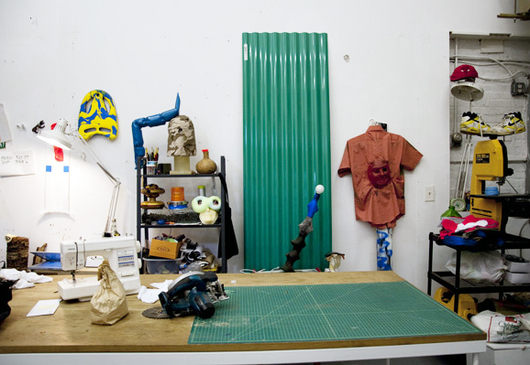
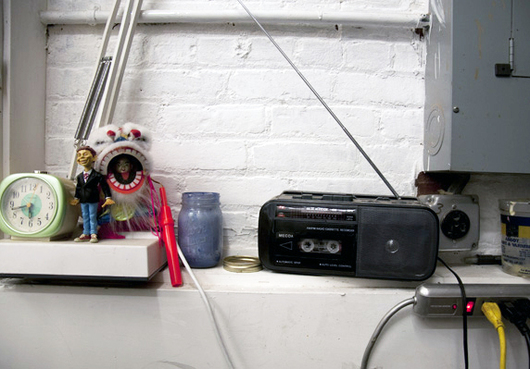
4. Show us your studio and tell us what you like about it.
My studio is in a small, old industrial building on the outskirts of Brooklyn. It’s basically under a bridge on the Newtown creek; there are no people living in the neighborhood, just a lot of scrap-metal businesses and a giant sewage-treatment plant that looks like a space station. I really like the area and the way I feel working in this strange, almost inhuman part of the city. Anything goes in terms of production. I share the building with two other artists, Tin Nguyen and Debo Eilers, and an architect named David Bench. Everyone is really hard working and the studios feel like an organism because the physical space is just as in flux as the ideas of the people working there. I’m also able to use power tools at 3 AM and play loud music all the time, so it’s really great for me.
